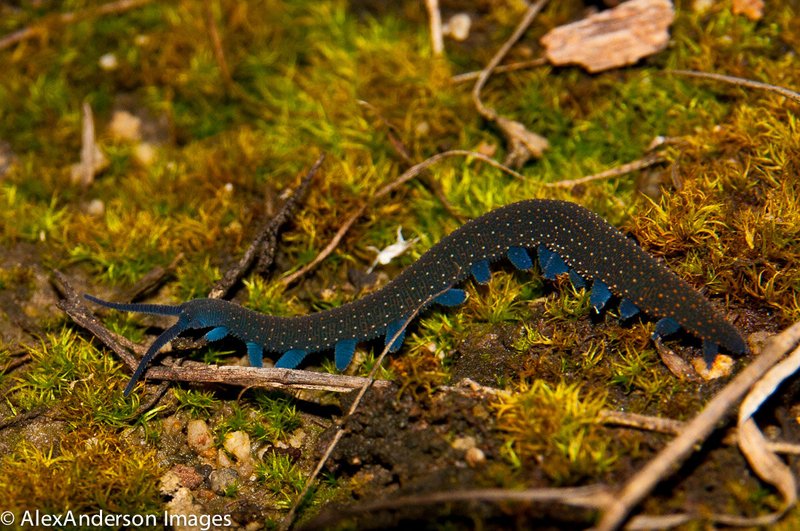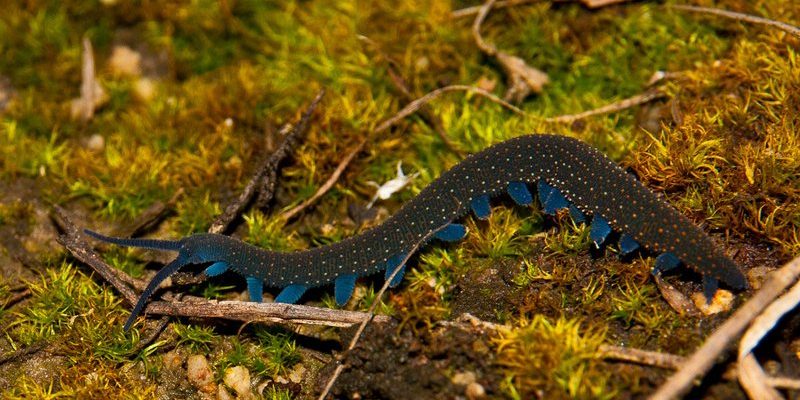
Imagine a creature that looks like a cross between a caterpillar and a slug, gliding along the damp forest floor. That’s a velvet worm for you. These fascinating arthropods use strategic adaptations to navigate their humid habitats. But how do they manage to stay cool and protected during the chaotic storms that can hit their homes? To answer that, we’ll explore the unique survival strategies they’ve developed and how these traits are crucial for thriving in their unpredictable environment.
What Are Velvet Worms?
Velvet worms, or peripatus, are unique and ancient creatures that belong to a group called Onychophora. They’re often found in tropical and subtropical regions, typically in moist environments like rainforests. What sets them apart is their distinct, velvety appearance—hence the name! These little guys can grow between 1 to 15 centimeters long and have soft bodies covered in tiny, fuzzy projections that give them their characteristic texture.
What’s really interesting is their predatory nature. Velvet worms hunt by shooting out a sticky slime from their mouths, which ensnares unsuspecting prey like insects. Their unique method of hunting and their soft, flexible bodies help them adapt to shifting environments. With a fascinating blend of charm and effective hunting strategies, velvet worms play a vital role in maintaining their ecosystems.
Habitat: The Rainforest Ecosystem
Velvet worms thrive in the rainforest, which is a densely packed ecosystem bursting with life. These environments provide them with plenty of moisture, which is crucial for their survival. Think of the rainforest as a giant sponge, soaking up water and keeping habitats humid and lush. The delicate balance in this ecosystem supports not just velvet worms but countless other species as well.
What’s important about this habitat is its vulnerability to tropical storms. These storms can bring heavy rainfall, flooding, and even harsh winds. While the rainforest is naturally resilient, velvet worms have developed incredible strategies to endure these weather events. They navigate their moist surroundings with ease, often taking refuge in leaf litter or under tree bark during stormy conditions.
Survival Strategies During Tropical Storms
So, how do velvet worms withstand these intense tropical storms? Let’s break down some of their survival strategies:
1. Moisture Retention: Velvet worms are perfectly adapted to their humid surroundings. Their bodies can absorb moisture from the environment, which is crucial when storm conditions make them vulnerable to drowning. By maintaining a slimy, moist exterior, they can stay hydrated, even when rain is pouring down.
2. Hide and Wait: When storms hit, velvet worms have a sneaky trick up their sleeves—they hide! These critters can burrow into the forest floor or cling to the underside of leaves, providing a shield against the pounding rains and strong winds. This behavior allows them to stay safe while waiting for the storm to pass.
3. Flexible Movement: Another key to their survival is their ability to move swiftly and quietly through their habitat. Their soft, flexible bodies enable them to navigate narrow spaces, allowing them to escape danger quickly. This flexibility is crucial during storms, as it helps them find refuge before the weather turns nasty.
Climate Change and Its Impact
As climate change continues to shape our planet, the impact on ecosystems like the rainforest—and its inhabitants like the velvet worm—can be profound. Increasing temperatures and erratic weather patterns can mean more intense storms, which can threaten the delicate balance of their habitat. Researchers are starting to study how these changes will affect velvet worms and other creatures, especially their ability to survive.
Here’s the thing: if tropical storms become more frequent or severe, the natural shelter velvet worms rely on may be compromised. This raises important questions about their future survival. Conservation efforts are essential to protect their habitats and ensure that these remarkable creatures continue to thrive in a rapidly changing environment.
The Importance of Velvet Worms
You might be wondering why velvet worms matter. Beyond their quirky appearance and survival strategies, they play a crucial role in their ecosystems. As predators, they help control insect populations, maintaining the balance of the forest food web. They also serve as indicators of environmental health—if velvet worm populations decline, it might signal broader ecological issues.
Moreover, velvet worms have sparked interest in scientific research due to their unique biology and behavior. Studying them can offer insights into evolution, adaptation, and even biotechnology. These little guys may hold clues that could inspire innovative solutions to modern challenges.
How Can We Protect Velvet Worms?
Protecting velvet worms and their habitats begins with understanding their crucial role in the ecosystem. Here are some steps we can take to help:
- Support Conservation Efforts: Engaging with organizations focused on rainforest conservation can make a difference.
- Reduce Carbon Footprint: Simple actions, like using less plastic and conserving energy, can help combat climate change.
- Raise Awareness: Sharing knowledge about velvet worms and their importance can inspire others to care for them.
- Participate in Eco-Tourism: Supporting responsible tourism that focuses on conservation can benefit local ecosystems.
Each small action contributes to preserving the delicate balance of nature and ensuring velvet worms thrive for generations to come.
Velvet worms may be small, but their survival strategies during tropical storms are a testament to nature’s ingenuity. These creatures remind us of the interconnectedness of ecosystems and the importance of protecting them. As we face global challenges like climate change, understanding and supporting the resilience of velvet worms can lead to a brighter future for all species, including us. By learning about and advocating for these charming creatures, we can appreciate the richness of life on our planet and work together to protect it.

